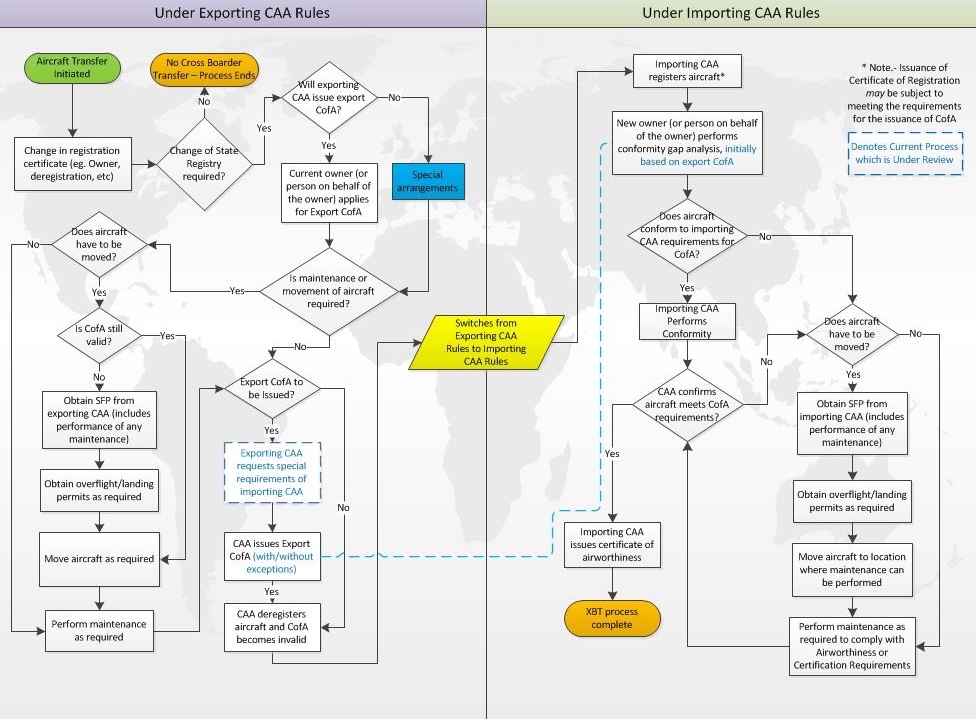What is Cross Border Transfer (XBT) of Aircraft?
According to Article 17 of the the Convention on International Civil Aviation ("Convention"), aircraft have the nationality of the State in which they are registered. Article 18 of the Convention, states that an aircraft cannot be validly registered in more than one State, but its registration may be changed from one State to another. The change of aircraft registration from one state to another is referred to as cross-border transfers of aircraft.

Why is ICAO involved in XBT?
The cross-border transferability issues are of interest to many stakeholders: States, operators, manufacturers, leasing companies and others.
The existing regulatory framework pertaining to cross-border transfers of aircraft were developed when commercial aircraft were predominantly purchased directly by their operators who then retained ownership of such aircraft for use during most or all of their useful lives. Changes to aircraft nationality were not common and aircraft tended to reside within one State for most or all of its useful life.
Over the past three decades, aircraft operators have realized substantial capital and operational efficiencies by leasing, rather than owning, a portion of their fleets for various periods of time. This has led to a sharp increase in the number of XBTs globally, yet the framework and resources allocated to perform the duties inherent in a transfer has not increased proportionally. The increase of XBT activities, along with differences in States' regulations, requirements and practices lead not only to the complexity of the process but in some cases, may cause duplication of efforts and inefficiencies for all participants, without providing an enhanced safety factor. Therefore, ICAO launched the XBT initiative with the aim of improving, standardizing and enhancing the efficiency of the XBT process.
What does a typical XBT process look like?
The XBT process inherently involves two States of Registry; the current State of Registry (the exporting State), and the intended future State of registry (the importing State). The main principle of the XBT process is that any aircraft registration should be made to the satisfaction of the importing State. The XBT process facilitates provisions of Annex 7 – Aircraft National and Registration Marks and Annex 8 – Airworthiness of Aircraft. The issuance of an Air Operator Certificate and its associated operations specifications (provided in Annex 6 – Operation of Aircraft) fall outside of the XBT process.
Typical XBT Process Map
(Click on the image to enlarge in a new browser window.)

